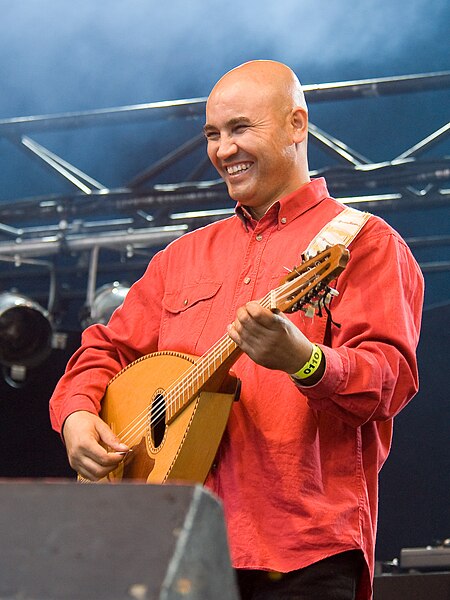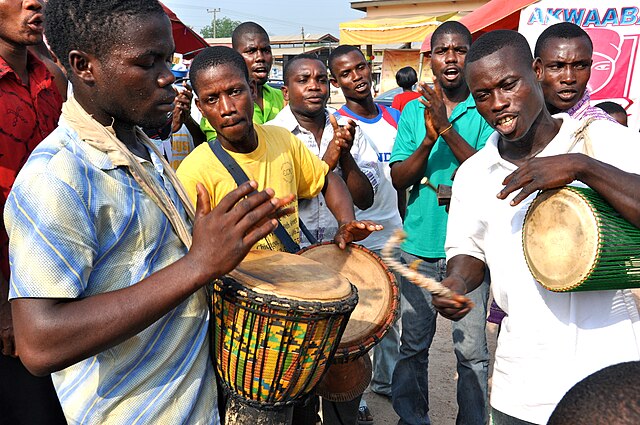Given the vastness of the African continent, its music is diverse, with regions and nations having many distinct musical traditions. African music includes the genres amapiano, jùjú, fuji, afrobeat, highlife, Congolese rumba, soukous, ndombolo, makossa, kizomba, Taarab, and others. African music also uses a large variety of instruments from all across the continent. The music and dance of the African diaspora, formed to varying degrees on African musical traditions, include American music like Dixieland jazz, blues, jazz, and many Caribbean genres, such as calypso and soca. Latin American music genres such as cumbia, salsa music, son cubano, rumba, conga, bomba, samba and zouk were founded on the music of enslaved Africans, and have in turn influenced African popular music.
Umm Kulthum
Aar Maanta performing with his band at Pier Scheveningen Strandweg in The Hague, Netherlands
Algerian musician Abderrahmane Abdelli playing the mandole
Traditional drummers in Ghana
Highlife is a Ghanaian music genre, along the coastal cities of present-day Ghana in the 19th century, during its history as a colony of the British and through its trade routes in coastal areas. It describes multiple local fusions of African metre and western jazz melodies. It uses the melodic and main rhythmic structures of traditional African music, but is typically played with Western instruments. Highlife is characterized by jazzy horns and guitars which lead the band and its use of the two-finger plucking guitar style that is typical of African music. Recently it has acquired an uptempo, synth-driven sound.
Ghanaian highlife singer Amakye Dede
An invitation to a concert featuring Louis Armstrong "from America" and E. T. Mensah and his Tempos Band "of West African Fame"
Top: clave. Bottom: highlife guitar part (Playⓘ).







